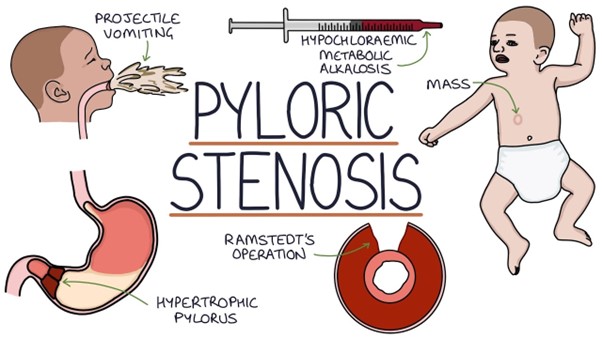RN HESI PAEDIATRICS Exam 2
RN HESI PAEDIATRICS Exam 2 ( 48 Questions)
A one-month old male infant is brought to the clinic by his mother who states that her son has been vomiting forcefully after each meal for the last three days. The infant is afebrile, dehydrated, and pyloric stenosis is suspected. Which other findings should the nurse identify that are consistent with pyloric stenosis?
reason:
Rooting, hunger, and irritability: These symptoms are not directly associated with pyloric stenosis. Rooting, hunger, and irritability are typical behaviours in infants and are not specific indicators of pyloric stenosis. Forceful vomiting, as described in the scenario, is more characteristic of pyloric stenosis.
reason:
An olive-shaped mass in the abdominal area is the correct answer. Pyloric stenosis is a condition characterized by hypertrophy (enlargement) of the muscle surrounding the pylorus, the opening between the stomach and the small intestine. This hypertrophy leads to narrowing of the pyloric channel and causes gastric outlet obstruction. One of the hallmark signs of pyloric stenosis is the presence of an olive-shaped mass in the upper abdomen, which can be felt upon palpation. This mass represents the thickened pylorus and is a key diagnostic finding.

reason:
Bile-stained emesis: While vomiting can occur in pyloric stenosis, bile-stained emesis is not a specific finding for pyloric stenosis alone. It can occur in various gastrointestinal conditions, and its presence does not necessarily confirm pyloric stenosis.
reason:
Perianal diaper rash from persistent diarrhea: Persistent diarrhea and perianal diaper rash are not typical features of pyloric stenosis. Pyloric stenosis primarily presents with forceful vomiting due to the obstruction at the pylorus, causing retained stomach contents. Diarrhea and diaper rash would be
